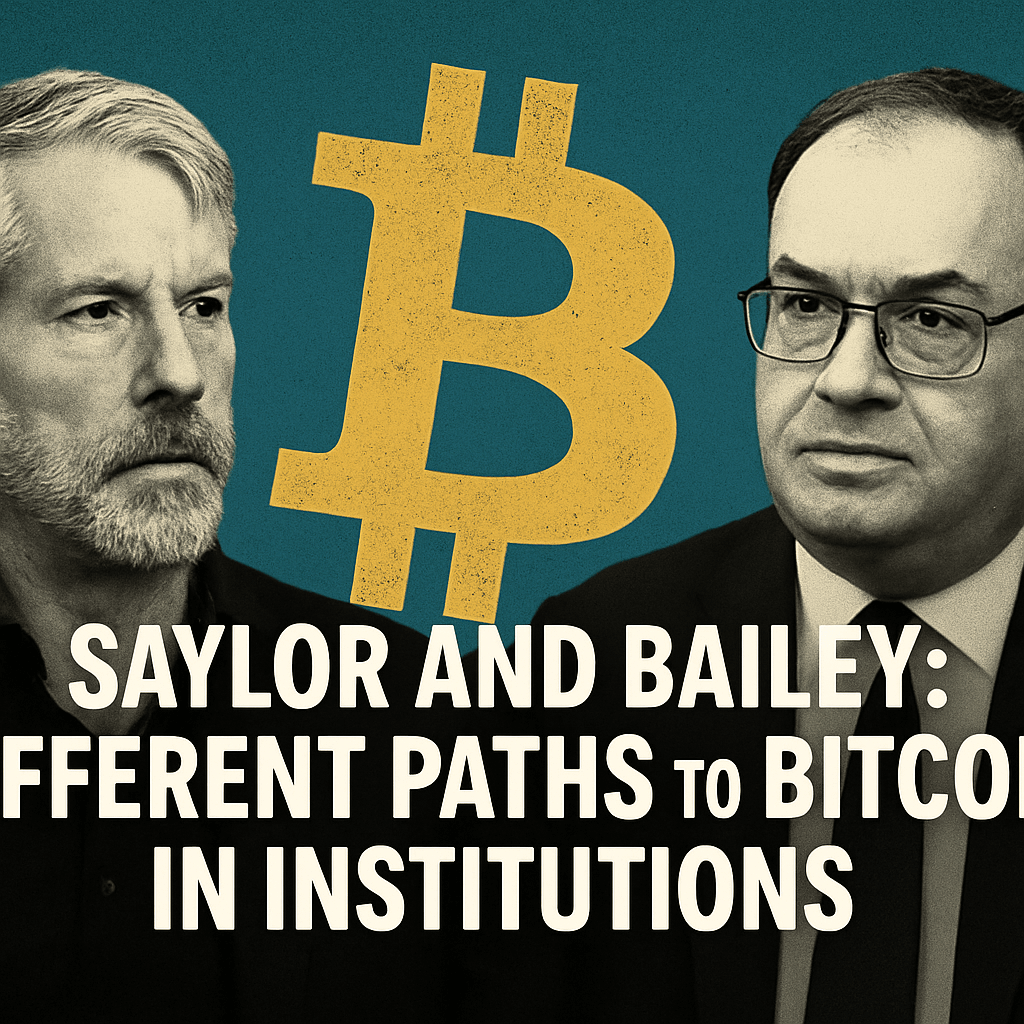Saylor and Bailey: Different Paths to Bitcoin in Institutions


Michael Saylor and David Bailey are at the forefront of driving Bitcoin adoption in institutional finance. While both are recognized leaders in this space, their methodologies and strategies differ significantly, reflecting a broader dialogue on how Bitcoin can shape corporate treasury management and investment strategies.
The Saylor Approach: Bitcoin as a Strategic Asset
Michael Saylor, co-founder and executive chairman of MicroStrategy, has taken an aggressive stance on Bitcoin, viewing it as a hedge against inflation and a superior store of value. His firm has amassed over 140,000 BTC, believing that Bitcoin’s scarcity and decentralized nature will lead to substantial long-term appreciation.
Key Strategies:
- Corporate Treasury Policies: Saylor’s approach revolves around rethinking corporate treasury strategies. He advocates for converting cash reserves into Bitcoin, arguing that conventional currency is subject to devaluation.
- Public Engagement: Saylor is known for his active outreach, utilizing social media platforms and public forums to educate executives and investors about Bitcoin’s benefits.
- Buy-and-Hold Philosophy: Unlike day trading or speculative buying, Saylor champions a long-term holding strategy, suggesting that those who acquire Bitcoin now will reap significant benefits as adoption increases.
The Bailey Perspective: Decentralized Finance and Broader Access
Conversely, David Bailey, CEO of BTC Inc., promotes a more decentralized vision of Bitcoin adoption, emphasizing accessibility for smaller enterprises and individuals. He argues that Bitcoin should not just be seen as an asset for wealthy corporations but as a decentralized currency that anyone can use.
Distinct Focus Areas:
- Educational Initiatives: Through his involvement with BTC Inc., Bailey fosters educational programs aimed at demystifying Bitcoin and promoting understanding of its underlying technology.
- Investment Diversity: Bailey encourages businesses to explore a wide range of cryptocurrencies and blockchain technologies rather than solely focusing on Bitcoin, fostering innovation in the space.
- Policy Advocacy: Bailey advocates for regulatory clarity in the cryptocurrency space, believing that clear guidelines will encourage wider adoption among businesses.
Institutional Sentiment Towards Bitcoin
As institutional interest in Bitcoin continues to grow, both Saylor and Bailey’s efforts are gaining traction. According to a recent report by Fidelity Digital Assets, the number of institutional investors in the cryptocurrency space has increased significantly in the past year, with 30% of institutions considering Bitcoin as a long-term investment.
Furthermore, new products, such as Bitcoin Exchange-Traded Funds (ETFs), are becoming more prevalent, allowing institutions easier access to the cryptocurrency market without directly holding the asset. This trend aligns with Saylor’s views while also providing a platform for those who resonate with Bailey’s more inclusive philosophy.
Challenges in Bitcoin Adoption
Despite the momentum, both leaders acknowledge significant challenges facing Bitcoin’s institutional adoption, including:
- Regulatory Concerns: The evolving landscape of cryptocurrency regulation can create uncertainties for institutional investors. Legislative frameworks across different jurisdictions often lag behind technological developments.
- Security Issues: Concerns about hacking and security breaches remain a critical barrier. Institutions must implement robust security measures to mitigate these risks.
- Market Volatility: While proponents argue that Bitcoin’s volatility will diminish with broader adoption, it remains a deterrent for risk-averse investors.
Conclusion
In summary, Michael Saylor and David Bailey represent two influential perspectives in the discussion of Bitcoin’s role in institutional finance. While Saylor focuses on aggressive adoption and a strategic asset viewpoint, Bailey emphasizes decentralization and wider access. As the landscape of digital currencies continues to evolve, the paths they delineate may shape the future of Bitcoin—whether as a monetary asset for corporations or a widespread currency for individuals.